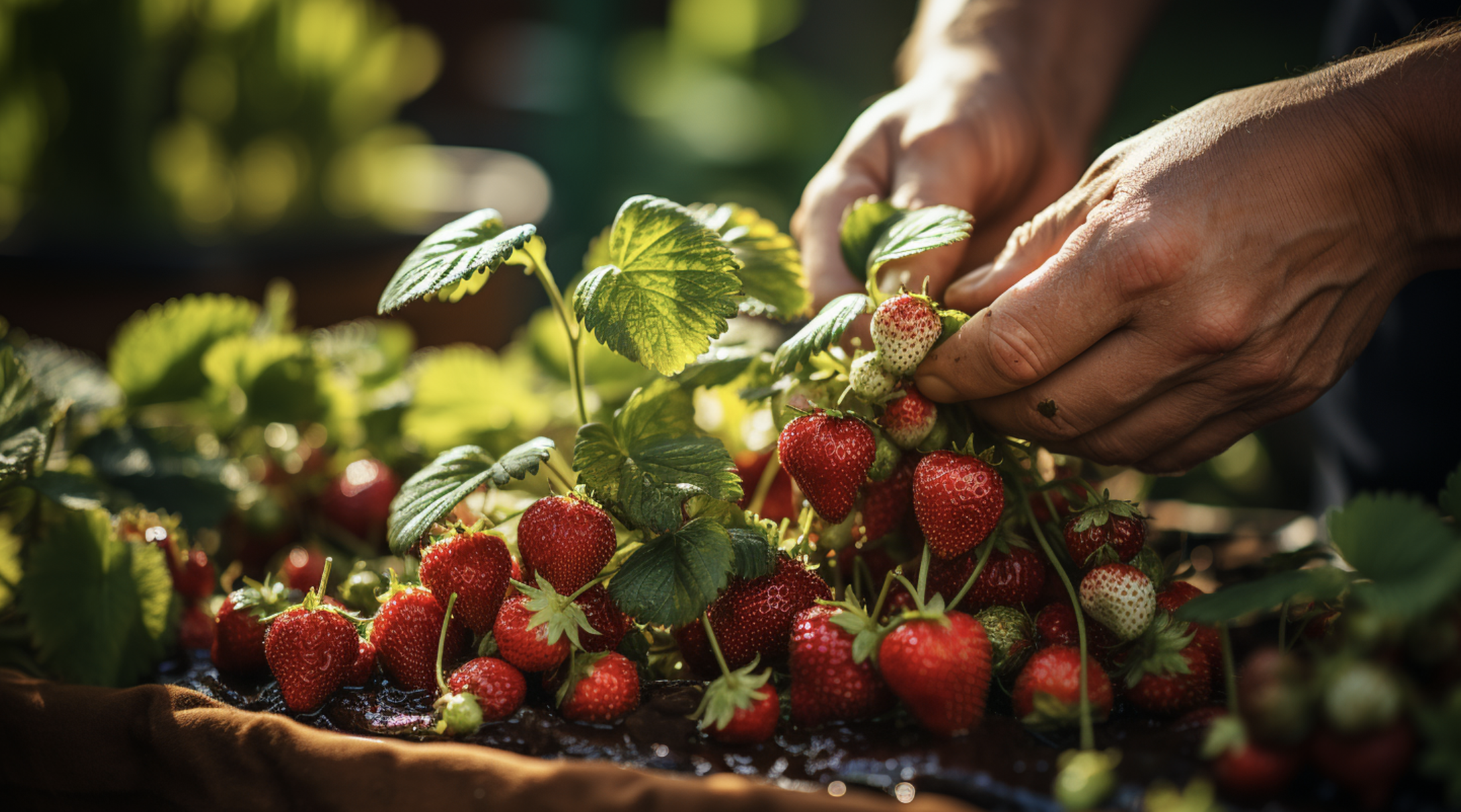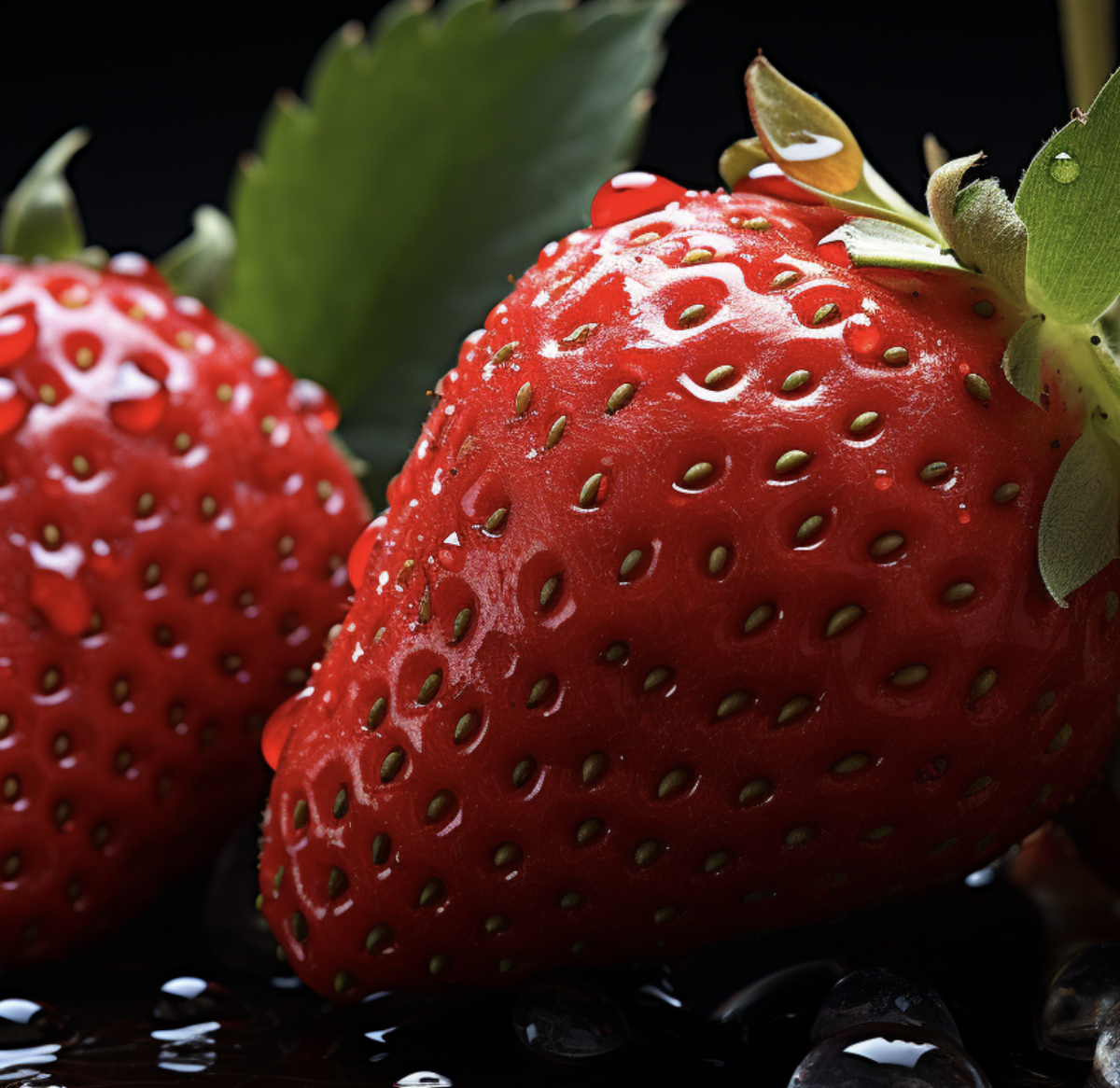Have you ever savored a bowl of fresh, juicy strawberries and wondered where these delightful berries come from? Do strawberry plants keep producing year after year, or are they a one-and-done crop?
The question of whether strawberries are perennial or annual plants is common. Understanding strawberry plants’ lifespan and growth cycle is fascinating for anyone who appreciates these ruby-red fruits.
In this article, we’ll explore the lifespan of strawberry plants in depth and uncover the answer to the burning question: Are strawberries perennials?
We’ll also delve into the factors that influence how long strawberry plants produce fruit and share some tips for prolonging their productive lifespan.
By the end of this post, you’ll understand whether strawberries are perennial plants and what that means for their growth cycle. So, let’s embark on this sweet journey of discovery together!
Understanding Strawberry Varieties
Understanding the different types of strawberry plants and their lifespan is essential.
1. June-Bearing Strawberries
June-bearing strawberries, also known as short-day strawberries, produce one large crop of fruit during a 2-3 week period in late spring or early summer.
These varieties tend to have the largest fruits and are popular for their intense flavor. However, they typically only produce fruit for one season and then need to be replaced.
2. Everbearing Strawberries
As the name suggests, everbearing strawberries produce fruit throughout the growing season. They typically have two main crops, one in late spring and another in early fall.
While the fruits may be smaller than the June-bearing varieties, everbearing strawberries can continue producing for 2-3 years with proper care.
3. Day-Neutral Strawberries
Day-neutral strawberries are similar to everbearing varieties in that they produce fruit continuously throughout the growing season.
However, they are not affected by day length and can produce fruit if temperatures remain between 35-85°F (1.7 and 29.4°C). These plants can be productive for 1 to 2 years before needing replacement.
It’s worth noting that while everbearing and day-neutral strawberries have a longer fruiting period, they may produce a smaller overall yield compared to June-bearing varieties.
Understanding the characteristics of each strawberry type will help you choose the best variety for your garden and your desired outcome, whether that’s a short-term bumper crop or a longer-lasting, lower-maintenance plant.
Factors Influencing Strawberry Longevity
By optimizing these elements, you can help your strawberries thrive and produce delicious fruits for multiple seasons.
1. Soil Quality
Strawberries grow best in well-draining, fertile soil rich in organic matter. Sandy loam soils with a pH between 5.5 and 6.8 are ideal.
Amending your soil with compost or well-rotted manure before planting can improve soil structure and fertility, promoting healthy root development and plant longevity.
2. Weather Conditions
Strawberries are sensitive to extreme weather conditions. Excessive heat, cold, or moisture can stress the plants and reduce their lifespan.
Providing shade during hot summers and protecting plants with mulch or row covers during harsh winters can help mitigate the impact of unfavorable weather.
3. Pest and Disease Control
Strawberries are susceptible to various pests and diseases, such as aphids, spider mites, gray mold, and root rot.
Regularly monitoring your plants and implementing integrated pest management techniques, such as beneficial insects or organic fungicides, can help prevent infestations and extend plant longevity.
4. Watering
Consistent moisture is crucial for strawberry plants, especially during fruit development. Ensure your plants receive 1-2 inches of water weekly through rainfall or irrigation.
Avoid overhead watering, which can promote fungal growth. Instead, drip irrigation or soaker hoses deliver water directly to the roots.
5. Fertilizing
Strawberries benefit from regular fertilization to support healthy growth and fruit production. Apply a balanced, slow-release fertilizer at planting and then follow up with a nitrogen-rich fertilizer after harvesting to encourage vigorous leaf growth.
Avoid over-fertilizing, as this can lead to excessive vegetative growth at the expense of fruit production.
Focusing on these essential factors and providing your strawberry plants with optimal growing conditions can significantly extend their lifespan and allow them to enjoy bountiful harvests for years.
The Perennial Nature of Strawberries
Strawberries can be perennial in the right conditions, but their longevity and productivity can vary depending on several factors.
USDA Hardiness Zones
Strawberries are best suited for growing in USDA hardiness zones 6 through 8, where they can thrive as perennials. The climate in these regions provides the ideal balance of cool winters and mild summers, allowing the plants to go dormant and reemerge the following spring.
Factors Affecting Perennial Growth
While strawberries can be perennial, their health and productivity are influenced by various factors:
Variety: Some strawberry varieties, such as everbearing and day-neutral types, are more likely to continue producing fruit year after year compared to June-bearing varieties.
Soil conditions: Well-draining, fertile soil is essential for strawberry plants’ long-term health. Poorly draining or nutrient-deficient soils can reduce vigor and shorten lifespans.
Climate: Extreme hot and cold temperatures can stress strawberry plants and impact their perennial nature. Protecting from harsh conditions can help extend their longevity.
Disease and pest pressure: Strawberries are susceptible to various diseases and pests, which can weaken the plants over time. Implementing proper management strategies is crucial for maintaining the plants’ perennial nature.
Longevity and Productivity
While strawberries can be perennial, their productivity and fruit quality may decline. Most strawberry plants remain productive for 2-4 years, after which they may produce smaller fruits or become more susceptible to diseases.
Regularly replacing older plants with new, vigorous ones can help maintain a productive strawberry patch.
In conclusion, strawberries can be grown as perennials, especially in USDA zones 6 through 8. However, variety, soil conditions, climate, and disease pressure influence their longevity and productivity.
Providing the right growing conditions and care allows you to enjoy strawberries’ perennial nature and savor their delightful fruits for years.
Preparing and Caring for Strawberries Over Winter

One key to maintaining a thriving perennial strawberry patch is properly preparing and caring for your plants during winter. A little extra effort can ensure their survival and productivity in subsequent seasons.
1. Pruning and Cleanup
Before the first frost, remove any dead, diseased, or damaged foliage from your strawberry plants. This helps prevent the spread of diseases and pests and allows the plants to focus their energy on healthy growth. Trim the remaining leaves to about 1 inch above the crown.
2. Mulching
After pruning, apply a layer of mulch around your strawberry plants to protect them from the cold and prevent frost heaving. Use straw, pine needles, or shredded leaves, ensuring that the mulch is free from weed seeds. Apply a 3-4 inch layer, not covering the plants’ crowns.
3. Row Covers
In colder regions (USDA zones six and below), row covers or low tunnels can provide an extra layer of protection. These structures create a microclimate around your strawberry plants, shielding them from harsh winds and extreme temperatures.
Remove the covers in early spring to ensure proper ventilation and prevent overheating.
4. Watering
While strawberries are dormant during winter, they still require moisture to survive. Provide occasional watering in areas with dry winters to prevent the roots from drying out completely. Avoid overwatering, leading to root rot and other fungal diseases.
5. Pest and Disease Management
Continue monitoring your strawberry plants for signs of pests and diseases throughout the winter. Remove any infected plant material and dispose of it properly to prevent the spread of problems.
If necessary, apply dormant sprays or treat with organic fungicides to control overwintering pests and diseases.
6. Spring Care
As spring approaches and your strawberry plants show signs of new growth, gradually remove the mulch and row covers. This will allow the soil to warm up and encourage the plants to resume active growth.
Be prepared to protect the flowers from late spring frosts by covering them with blankets or using row covers.
Conclusion
In this guide, we’ve addressed the question: are strawberries perennials? The answer is yes. Strawberries can be grown as perennials, particularly in USDA zones 6 through 8.
However, their longevity and productivity depend on variety, soil quality, weather, pest and disease pressure, and proper care.
Understanding the different strawberry types and implementing strategies such as proper planting, mulching, pruning, and rejuvenation can maximize the lifespan of your plants.
Proper winter care is crucial for the survival and productivity of your perennial strawberry plants.
Staying attentive to signs that indicate it’s time to replace your plants, such as declining fruit production or pest and disease issues, is key to maintaining a healthy and productive patch.
With this knowledge, you can cultivate a thriving perennial strawberry garden. So, roll up your sleeves and embark on the gratifying journey of growing perennial strawberries!






